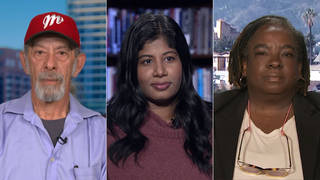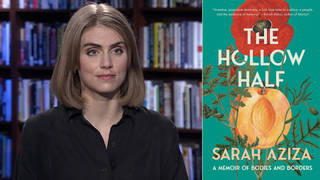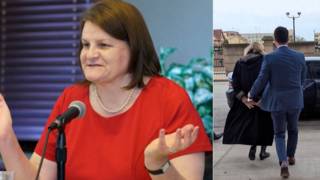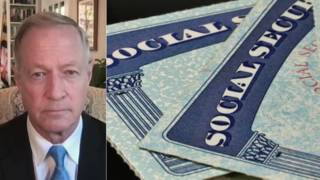
A federal judge yesterday threw out parts of the sweeping election money overhaul that took effect in Vermont this year, setting the stage for the latest major legal challenge to the country’s campaign finance system. [includes rush transcript]
The state may not impose mandatory spending limits on candidates, the judge ruled, nor may it limit contributions from political parties and from out-of-staters.
But the judge, William K. Sessions III of Federal District Court, upheld Vermont’s contribution limits, which are the lowest in the country for individual donors to candidates. Contributors may give a statewide candidate no more than $400, and a candidate for the State House of Representatives no more than $200.
Advocates of campaign finance changes said that though the ruling went partly against them, they welcomed it, because Judge Sessions seemed to signal that he wanted the case to be examined by a higher court, and they planned to appeal the ruling up to the United States Supreme Court if necessary.
Guest:
- John Bonifaz, with the National Voting Rights Institute.
Related link:
Transcript
AMY GOODMAN: Well, onto some very significant election news that has taken place in the last day. In a powerful judicial language, a federal district court yesterday opened the door to a reconsideration of the constitutionality of campaign spending limits — this news from Burlington, Vermont.
We’re joined on the telephone right now by John Bonifaz. He heads up the Voting Rights Institute in Boston. Welcome to Democracy Now!
, John.
JOHN BONIFAZ:
Thank you. Thank you for having me.
AMY GOODMAN:
Well, can you explain — I’m having a little difficult time understanding what this decision is all about.
JOHN BONIFAZ:
Well, Vermont in 1997 became the first state, since the Supreme Court declared campaign spending limits unconstitutional, to enact mandatory campaign spending limits. Back in 1976, the US Supreme Court struck down congressional campaign spending limits, which had been passed by Congress in the wake of the Watergate scandal. It said such limits violated the First Amendment rights of candidates and their speech. But Vermont decided to lead the way for a reconsideration of that decision and of this question of whether campaign spending limits enhance or hinder basic First Amendment values, and they have set up this test case.
And yesterday, the Federal District Court, in ruling upon this matter and many other provisions which Vermont enacted through its campaign finance reform law, decided that this is a matter that really does deserve further review. While he struck down the campaign spending limits, in very strong language he made it clear that this question should be reviewed on appeal. And he said that spending limits are an effective response to certain compelling governmental interests not addressed by the Supreme Court in 1976 in Buckley v. Valeo
.
It is a breakthrough ruling, not only for those in Vermont who have fought so hard for campaign finance reform, but also for people across this country who recognize that unlimited campaign spending threatens the basic integrity of our election process, tramples on all of our First Amendment rights — those who don’t have access to money — and undermines basic principles of our democracy.
JUAN GONZALEZ:
Now, this is campaign spending, as opposed to donations, right? Because the money that someone gives to a political candidate can be capped now legally. But this is a question of how much money that political candidate can spend. Now, I would ask you, if you limit the contributions, aren’t you indirectly limiting the spending of that individual?
JOHN BONIFAZ:
Well, that was the argument that was made in Buckley by those who were challenging the limits, that, in effect, campaign spending limits would not address the problem of corruption and the appearance of corruption. Contribution limits have been found to be constitutional since 1976, since that Supreme Court ruling. And, in fact, this district court judge upheld yesterday Vermont’s contribution limits, which are now the lowest in the country.
The problem, however, is that the contribution limits alone are not sufficient to address the problem of corruption and the appearance of corruption, nor do they address very other important governmental interests, namely, the time that office holders have to spend raising money away from their governing duties, and basic principles of political equality, which cannot be obtained solely by contribution limits. So, overall caps on spending are also critical to the overall need for reform.
Vermont also enacted full public funding in a voluntary capacity for lieutenant governor and governor races in Vermont, and that remains. That was not challenged in court. But I think the campaign spending limits piece definitely is a key step towards overall reform.
AMY GOODMAN:
We’re talking to John Bonifaz, who is head of the National Voting Rights Institute. How did the Vermont law come into being?
JOHN BONIFAZ:
The Vermont law came into being because organizations at the grassroots level pushed with the legislature, a citizen legislature in Vermont, one of the few that exists in the country, to get this law passed, led by the Vermont Public Interest Research Group.
We now represent those organizations as interveners in this case and have helped to defend this law, both at the district court level and take it up to the appellate court and the Supreme Court, if necessary. And this is clearly an example of the growing grassroots movement that exists in this country for this kind of dramatic change of our campaign finance system. From Maine to Arizona, from Massachusetts to Missouri to Oregon, all over this country we see a growing movement for this kind of dramatic change.
But Vermont went the furthest, by not only enacting a voluntary public funding system, but by also by enacting mandatory limits, becoming the first state to do so since 1976, and setting up this test challenge on Buckley v. Valeo
.
JUAN GONZALEZ:
Wouldn’t another way to be able to limit the spending or the draw to candidates of spending money, would be to create a public financing system that would make it so prohibitively — that would be so prohibitively geared against those who go outside the public funding system and who refuse to accept the voluntary funding, let’s say a three-to-one public match, that most candidates or virtually all candidates would want to subscribe to public funding and those limits?
JOHN BONIFAZ:
Well, there’s no question that that kind of public funding system is a very effective system, and similar kinds of systems are already in place in Maine, Arizona and Massachusetts. But I do think ultimately we have to revisit the US Supreme Court’s ruling on this question of campaign spending limits. Otherwise, those who have access to money and to the well-connected are going to be able to opt out of this system and spend to the sky. And unlimited campaign spending is a direct threat to our basic democratic principles.
And we must have a dramatic shift in the way we look at this question, from private to public funding, but also recognizing that money does not equal speech. Money is an amplifier to speech for those who have all this money. And those who don’t money still have speech rights. And they have the right to vote, the right to an equal and meaningful vote, as protected under the equal protection law.
AMY GOODMAN:
Finally, John, a few years ago I went to the Highlander Center in Tennessee, where all different groups gathered to fight to take private money out of public campaigns. They described it as the new civil rights movement. It’s a way you’ve talked about it, as well.
JOHN BONIFAZ:
Absolutely. I mean, we recognize that this a movement that has to emerge as prior civil rights struggles have emerged. You know, women in this country did not get the right to vote because men in power thought it was a good idea. They fought, they organized the women’s Suffrage Movement. Labor did not get its gains in the 1930s because business and power thought it was a good idea. They fought, they organized the labor movement. And the Civil Rights Movement was clearly in the 1960s the reason why Jim Crow was brought down in the South and throughout this country, desegregating the nation. We need a movement on that scale. And this is a civil rights movement of our time.
AMY GOODMAN:
Well, I thank you for being with us, John Bonifaz, speaking to us from a courtroom — actually, a courthouse in Boston. He is head of the National Voting Rights Institute in Boston, Massachusetts. Your website?
JOHN BONIFAZ:
<a href=http://www.nvri.orgwww.nvri.org, like National Voting Rights Institute.
AMY GOODMAN:
And your phone number?
JOHN BONIFAZ:
(617) 368-9100.
AMY GOODMAN:
Thanks for being with us.
JOHN BONIFAZ:
Thank you so much.













Media Options